What Is Eel Grass?
Eelgrass is a term that refers to a large group of aquatic flowering plants (not an alga) that belongs to the family Zosteraceae. Eel grass is a type of seagrass that is common in shallow coastal waters around the world. Eel grass provides shelter and nutrients to all kinds of sea life. The plant gets its name from its long, slender leaves, which resemble the body of an eel.
Zostera Vs. Vallisneria
The two most common types of seagrass are Zostera and Vallisneria. While these two plants have many similarities, there are also several key differences between them. For one thing, Zostera is typically found in colder coastal regions, while Vallisneria prefers warmer and more tropical waters. The main difference between the two is their habitat: Zostera marina grows in salt water, while Vallisneria grows in fresh water. Additionally, Zostera is often shorter and more densely-packed, with stalks that are typically narrower and finer than the thick grass-like leaves of Vallisneria.
Eel Grass: Appearance
Eelgrass is a type of underwater grass that is common in shallow, coastal waters. It gets its name from its long, slender leaves, which resemble eels. Eel grass can be found in a variety of colors, including green, yellow, and brown. In some cases, the leaves may be variegated or have a mottled appearance. Eelgrass typically grows to a height of about 3 feet, but it can sometimes reach heights of over 3 feet. The width of leaves is 0.25 in. The plant typically flowers in the springtime, producing small, white blossoms.
Eelgrass Coverage and Habitat
Eel grass beds grow in sandy substrates. This adaptable organism thrives in areas with clear, shallow water, making it ideal for inhabiting bays and estuarine habitats. Although eelgrass can often be found in calm waters, it has also been known to grow quite vigorously near coastal shores that experience frequent wave action. Eel grass typically grows in submerged eelgrass meadows (eelgrass beds) near the shoreline, in estuaries, and in outer bays. It can also be found in brackish water environments such as lagoons and tidal flats.
Eel Grass Reproduction
The process of sexual reproduction begins when the male plant releases its pollen into the water. This pollen is then carried to the female plant, where it fertilizes the eggs. The fertilized eggs develop into young plants, which eventually grow into adult eel grass. Asexual reproduction, on the other hand, does not require pollen or fertilization. Instead, eel grass simply produces new plants from its runners or rhizomes. This process is much faster than sexual reproduction and allows eelgrass to quickly colonize new areas.
The Real Value of Zostera Marina
Despite their various habitats, though, eel grass beds share one critical feature: they offer a range of important benefits for local ecosystems.
Eelgrass Provides a Habitat for Animals
One of the most important roles played by these plants is habitat provision for a wide variety of animals, including fish and invertebrates. In addition, eelgrass provides vital food and habitat for fish and wildlife: birds, mammals, shellfish, and other organisms, through its extensive root structure. By providing not only crucial habitat but also rich sources of nutrients and food for waterfowl, eel grass is an essential element in maintaining healthy aquatic ecosystems.
Stabilizes Seafloor
Additionally, eelgrass helps to stabilize the seafloor by forming large beds or seagrass meadows that anchor the subtidal sediment and accumulate sediments from incoming water.
Improves Water Quality and Clarity
The long, thin leaves of eelgrass trap particles in the water, preventing them from floating freely. As a result, the water is clearer and contains fewer pollutants.
Helps to Sequester Carbon
Eel grass also helps to sequester carbon from the atmosphere, resulting in a reduction of greenhouse gas emissions and thus mitigating the effects of climate change. In addition, eel grass filters out harmful chemicals from marine environments and improves water clarity by reducing turbidity. By producing oxygen through photosynthesis in its leaves, it eliminates excess nutrients that would otherwise lead to hypoxia.
How Does Eel Grass Affect Sedimentation?
Eelgrass is a type of flowering plant that plays an important role in helping to prevent sedimentation. This is due, in part, to the way that eel grass spreads across the seafloor and anchors itself firmly in place. In addition, the surfaces of eel grass leaves also help to slow down water and lull flying debris like sand and silt. Finally, eelgrass also prevents soil erosion.
Human Impacts on Eelgrass Distribution
Eelgrass, or zostera marina, is a keystone species in ecosystems around the world. Its extensive beds provide important habitat for other marine life, such as crabs, snails, and fish. Unfortunately, eel grass has also been increasingly threatened by human activity over the years. The biggest problem has been coastal development and runoff from agricultural fields and city streets. Not only does this lead to an increase in nutrient pollution in the water, but it also creates increased turbidity levels that make it difficult for eel grass to grow and thrive.
Eelgrass Conservation and Management
In North America, the main cause of eel grass decline is human activity. Unfortunately, the habitat of eel grass is threatened by pollution, oil spills, dredge, sedimentation from construction projects or farming runoff, and climate change. The loss of eelgrass habitat could cause populations of many marine species to decline dramatically, or even go extinct. Their roots can’t take hold if there are too many pollutants in their environment. Increased development along the shorelines has led to pollution, overfishing and coastal disturbance in many areas where eel grass grows naturally.
Eelgrass Restoration Efforts
Through careful eelgrass monitoring, improved regulations for fishing, and stabilization efforts along coastlines, we can help to ensure the long-term health of eelgrass and all the valuable ecosystems that depend on it.






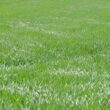
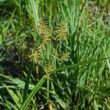
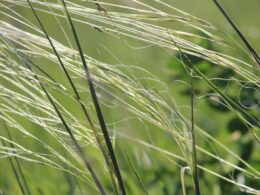
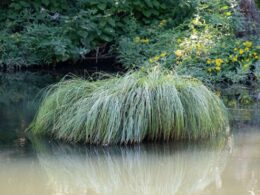

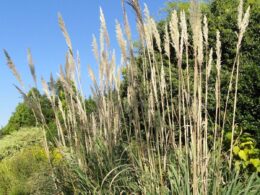
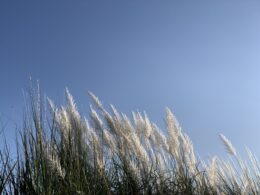
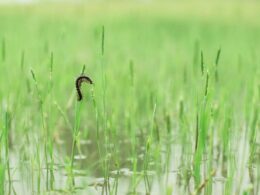

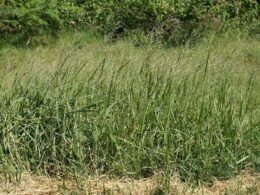
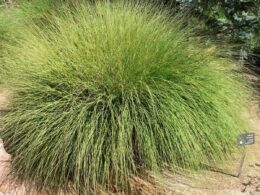
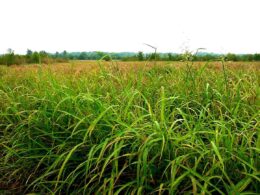

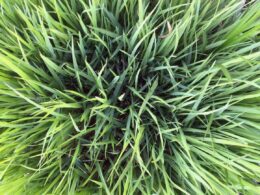
Thanks Mia! The eel grass in Morro Bay, Central California, is having a monumental recovery this year!